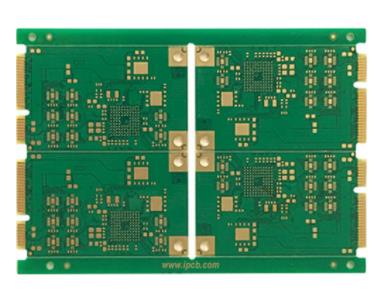PCB multilayer board is a special kind of printed circuit board, and its place of existence is generally special, for example, PCB multilayer board will be pcb multilayer board in the circuit board. This kind of multilayer board can help the machine to conduct various circuits, not only that, but also can play an insulating role, so that electricity will not collide with each other, and it is absolutely safe. If you want to use a pcb multilayer board with good performance, you must carefully design it. Next, we will explain how to design pcb multilayer boards.
Design steps of pcb multilayer boards.
1. Determination of board shape, size and number of layers
1.1. Any printed board has the problem of matching with other structural parts. Therefore, the shape and size of the printed board must be based on the overall structure of the product. However, from the perspective of production technology, it should be as simple as possible. Generally, it is a rectangle with a small ratio of length to width, which is conducive to improving production efficiency and reducing labor costs.
1.2. The number of layers must be determined according to the requirements of circuit performance, board size and circuit density. For multilayer printed boards, four-layer PCB boards and six-layer PCB boards are the most widely used. For example, four-layer PCB boards are two wire layers (component surface and welding surface), one power layer and one layer.
1.3. Each layer of the multilayer board shall be symmetrical, and it is better to have an even number of copper layers, that is, four, six, eight layers, etc. Because of the asymmetric lamination, the board surface is prone to warp, especially for surface mounted multilayer boards, which should be paid more attention.

2. Thin, dense wires and signal wires susceptible to interference are usually arranged in the inner layer. Large area copper foil should be evenly distributed in the inner and outer layers, which will help to reduce the warpage of the plate and also enable a more uniform coating on the surface during electroplating. In order to prevent the appearance processing from damaging the printed wire and causing interlayer short circuit during machining, the distance between the conductive pattern in the inner and outer wiring areas and the board edge shall be greater than 50mil.
3. Requirements for conductor routing and line width
The power supply layer, stratum and signal layer shall be separated for multi-layer board wiring to reduce the interference between power supply, ground and signal. The lines of two adjacent layers of printed boards shall be as perpendicular to each other as possible or take oblique lines and curves instead of parallel lines to reduce the interlayer coupling and interference of the substrate. And the wire should be short as far as possible. Especially for small signal circuits, the shorter the wire, the smaller the resistance and the smaller the interference.
For signal lines on the same layer, sharp corners shall be avoided when changing direction. The width of the conductor shall be determined according to the current and impedance requirements of the circuit. The power input line shall be larger and the signal line may be smaller. For general digital boards, the line width of power input line can be 50~80mil, and that of signal line can be 6~10mil.
Conductor width: 0.5, 1, 0, 1.5, 2.0; Allowable current: 0.8, 2.0, 2.5, 1.9; Conductor resistance: 0.7, 0.41, 0.31, 0.25; During wiring, the width of lines shall be as consistent as possible to avoid sudden thickening and thinning of wires, which is conducive to impedance matching.
4. Drilling size and pad requirements pcb multilayer boards
4.1. The size of the drill hole for components on the multilayer board is related to the pin size of the selected components. If the drill hole is too small, the assembly and tin of the components will be affected; The drilling is too large, and the welding spot is not full enough during welding. In general, the calculation method of element hole diameter and pad size is:
4.2. Hole diameter of element hole=element pin diameter (or diagonal)+(10~30mil)
4.3. The diameter of component pad ≥ the diameter of component hole+18mil 4. As for the hole diameter, it is mainly determined by the thickness of the finished board. For high-density multilayer boards, it should generally be controlled within the range of plate thickness: hole diameter ≤ 5:1.
4.4. Diameter of via pad (VIAPAD) ≥ via diameter+12mil.
This multilayer board can help the machine to conduct various circuits, not only that but also can play an insulating role.